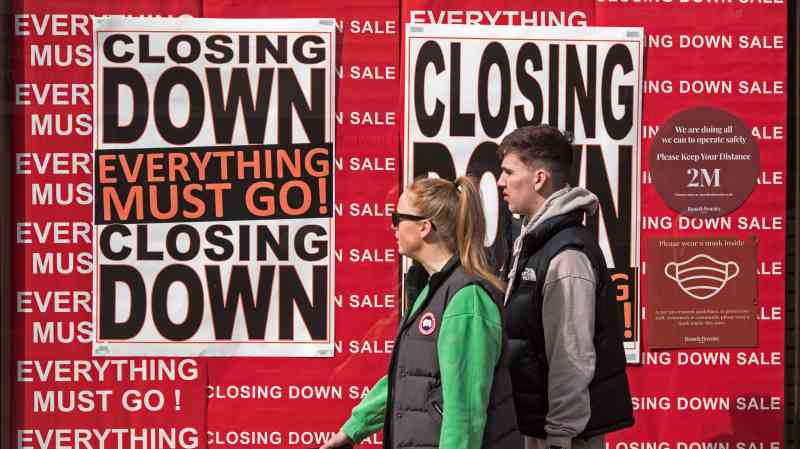Thousands more companies fall into insolvency
The number of companies that have gone insolvent over the past year has exceeded the number that failed during the global financial crisis in 2008.
In the year to the end of July, 25,551 companies fell into insolvency, a figure 1.4 per cent higher than the 25,186 insolvencies recorded over the same period in 2008-09.
The numbers published by the Insolvency Service indicate that the effects of a steep ascent in interest rates since 2021 have become more pronounced. Until now, business failures have been relatively muted since the Bank of England started to increase borrowing costs nearly three years ago, while unemployment has remained surprisingly low at 4.4 per cent.
“The latest insolvency figures are a strong reminder that many businesses are still a long way off from recovery,” Rebecca Dacre, a partner at Forvis Mazars, the accountancy firm, said. “Despite initial signs of improvement in the economy, some sectors are still experiencing severe difficulty as interest rates remain high.
“Falling consumer spending during the cost of living crisis has made it incredibly difficult for some businesses to survive. The retail and hospitality sectors have borne much of the brunt.”
This month the Bank lowered interest rates for the first time since March 2020, cutting its base rate to 5 per cent from 5.25 per cent. City traders believe that it will lower rates two more times this year by quarterly increments.
In July alone, 2,150 companies went insolvent, up by a quarter compared with the same month in 2023. However, compared with June this year, insolvencies were down from 2,349, according to non-seasonally adjusted data from the Insolvency Service.
A rise in business failures is often associated with increasing joblessness and slowing economic growth. This year the economy has picked up momentum, however, growing by 0.7 per cent and 0.6 per cent in the first and second quarters, respectively.
During the pandemic, the Conservative government launched a series of protective measures to ensure that business failures caused by lockdowns were kept to a minimum, pushing down the number of insolvencies. Most of these policies were abolished in late 2021, triggering a burst in insolvencies.
Corporate finances have been squeezed by challenges in supply and demand. Energy costs have grown substantially in the wake of Russia’s invasion of Ukraine, while consumer spending remains below its pre-pandemic levels.
Sarah Rayment, head of global restructuring at Kroll, the consultancy, suggested that looser monetary policy and steady growth should provide a boost to businesses. “The question is whether they will have enough financial headroom with higher borrowing costs or whether their lenders will give them enough leeway,” she said. “It is perhaps more likely that we will see more restructuring activity.”




Post Comment